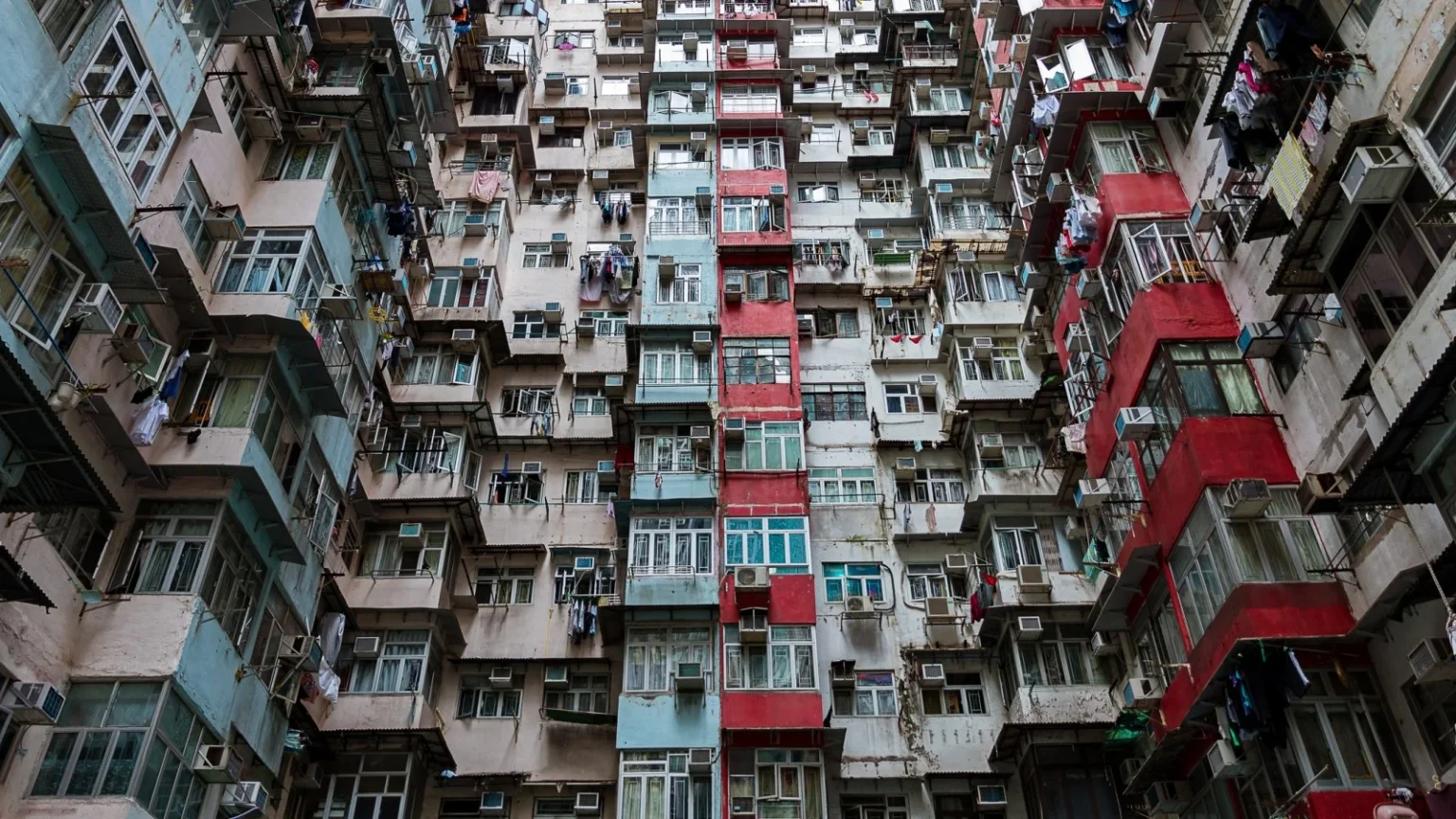Hong Kong, a bustling global metropolis, is renowned for its towering skyscrapers, gleaming shopping malls, and an economy that consistently ranks among the world’s most competitive. Yet, beneath the surface of wealth and prosperity lies a darker side—one where millions of residents are forced to live in spaces so small they have earned the nickname “coffin-sized apartments.”
These tiny, claustrophobic units, often measuring just 40 to 50 square feet—roughly the size of a parking space—have become an unfortunate symbol of the city’s deepening housing crisis. As real estate prices soar and available land becomes scarcer, these miniature homes are not a choice but a painful necessity for those who can no longer afford anything else.
A Desperate Struggle for Space
For many, these apartments represent more than just a physical space—they embody a daily struggle for dignity. People share their “homes” with a handful of belongings, often tucked into cramped corners, sometimes in near-total darkness. The walls feel as though they’re closing in, offering little privacy and even less comfort. The overwhelming sense of confinement is pervasive, and the emotional toll is profound.

Take the example of Mei Lin, a 42-year-old office worker, who has lived in a coffin-sized apartment for the past five years. “It’s hard to breathe sometimes,” she says, her eyes downcast as she speaks. “I come home after a long day, but it doesn’t feel like a home. It’s just a place to sleep, a place to survive.” Mei’s apartment is little more than a bed pushed up against the wall, with a tiny kitchenette where she can barely move. The sense of isolation in such a confined space is soul-crushing. “I sometimes feel like I’m living in a box,” she confides. “It’s hard not to feel like I’ve lost something, lost a sense of myself.”
The Psychological Burden
Living in such a small space, with minimal privacy and few opportunities to escape, can take a heavy toll on mental health. In Hong Kong, where long working hours and high stress are the norm, many residents of coffin-sized apartments experience feelings of anxiety, depression, and deep frustration. The lack of space is not just a physical limitation—it is a constant reminder of the broader societal problems that many people feel powerless to change.

A recent study found that nearly one in five Hongkongers suffer from stress due to overcrowded living conditions. These cramped apartments exacerbate feelings of social inequality, as they are often located in run-down, neglected buildings with poor ventilation, outdated plumbing, and inadequate heating. Residents, particularly those from lower-income families, are left with little room to thrive—not only physically, but emotionally and mentally as well.
An Entire Generation Lost in the Shuffle
The crisis extends far beyond the cramped apartments themselves—it is the larger housing market in Hong Kong that has become increasingly out of reach for younger generations. The dream of owning a home in one of the most expensive cities in the world feels like a distant fantasy for many. Homeownership has become a privilege reserved for the ultra-wealthy, and even renting a decent-sized apartment seems unattainable for those without a high-paying job or family support.

For young professionals like Kevin, a 28-year-old designer, the struggle is all too familiar. Kevin lives in a coffin-sized apartment with barely enough space to stretch out his legs. “This isn’t a home. It’s a temporary solution. But how long can I keep pretending this is normal?” he says. “I work hard, I save, but it feels like I’m always stuck in this cycle where no matter how much I try, I can’t move forward.” Kevin’s frustration echoes the sentiments of many young Hongkongers who feel trapped by the city’s housing market.
A City of Contradictions
Hong Kong is a city of extremes. Its skyline features some of the most luxurious properties in the world, while its streets are lined with makeshift housing that is barely adequate for human life. The stark contrast between the glittering wealth of luxury condos and the desperate living conditions of those in coffin-sized apartments underscores the inequality that has come to define the city. The emotional weight of this inequality is heavy, and it is carried by those who live in cramped, soul-destroying spaces, unable to escape the harsh realities of a system that seems stacked against them.
The people living in these spaces are not faceless statistics; they are individuals, each with their own story, their own struggles, and their own dreams. They are human beings who long for more than just a roof over their heads. They deserve to live with dignity, with space to breathe, and the opportunity to build a future.
Looking for Change
There are some signs of hope. Advocacy groups, architects, and even the government are beginning to acknowledge the need for affordable housing. In recent years, there have been attempts to build more public housing, although the pace is slow. Innovative ideas, such as micro-apartments and more creative use of space, have also been proposed, but these solutions remain far from widespread.
However, the road to meaningful change is long and uncertain. The people who live in these coffin-sized apartments cannot wait forever. Every day spent in these cramped, stifling conditions is a day taken away from their well-being, their happiness, and their sense of hope.

Until a real solution is found, those who live in these tiny homes will continue to fight—emotionally, physically, and mentally—for a better, more dignified life. Their resilience is a testament to their strength, but it is a strength born of necessity, not choice. And while they fight, they remind us that the pursuit of a home is not just about square footage—it is about creating a space where people can live fully, with a sense of security, comfort, and most importantly, a sense of belonging.
Until that day comes, the fight for affordable, humane housing in Hong Kong will remain one of the most pressing struggles of our time.




